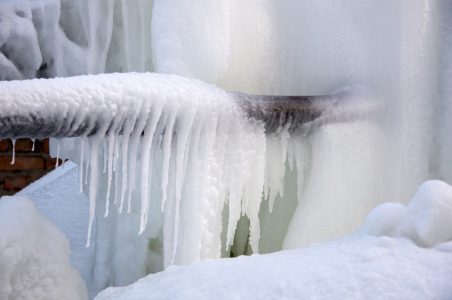Avoiding Frozen Plumbing: Top Strategies for Cold Weather
Avoiding Frozen Plumbing: Top Strategies for Cold Weather
Blog Article
In this article underneath you can locate additional exceptional news involving How to Prevent Your Pipes From Freezing.

Winter can ruin your pipes, specifically by freezing pipes. Right here's just how to stop it from happening and what to do if it does.
Intro
As temperature levels decrease, the danger of frozen pipes increases, possibly leading to costly repairs and water damages. Understanding just how to prevent frozen pipes is crucial for house owners in chilly climates.
Understanding Icy Pipelines
What triggers pipes to ice up?
Pipes ice up when exposed to temperature levels below 32 ° F (0 ° C) for prolonged durations. As water inside the pipes ices up, it increases, taxing the pipeline wall surfaces and possibly creating them to rupture.
Risks and damages
Frozen pipes can result in water system interruptions, building damages, and costly repair work. Burst pipelines can flooding homes and cause substantial structural damage.
Indicators of Frozen Water Lines
Determining frozen pipelines early can prevent them from bursting.
Exactly how to determine frozen pipelines
Seek lowered water circulation from faucets, uncommon smells or noises from pipes, and noticeable frost on subjected pipes.
Avoidance Tips
Protecting susceptible pipelines
Cover pipes in insulation sleeves or make use of warm tape to protect them from freezing temperature levels. Focus on pipelines in unheated or exterior locations of the home.
Heating strategies
Keep indoor spaces sufficiently heated up, particularly areas with plumbing. Open cabinet doors to allow cozy air to distribute around pipelines under sinks.
Securing Outside Plumbing
Garden hose pipes and outside faucets
Detach and drain yard hose pipes prior to winter. Mount frost-proof faucets or cover exterior faucets with shielded caps.
What to Do If Your Pipelines Freeze
Immediate actions to take
If you suspect icy pipes, keep taps available to ease stress as the ice melts. Make use of a hairdryer or towels soaked in warm water to thaw pipes gradually.
Long-Term Solutions
Structural modifications
Consider rerouting pipelines far from exterior wall surfaces or unheated locations. Add additional insulation to attic rooms, basements, and crawl spaces.
Upgrading insulation
Purchase high-quality insulation for pipes, attic rooms, and wall surfaces. Correct insulation helps preserve constant temperature levels and lowers the risk of frozen pipes.
Final thought
Stopping icy pipelines calls for aggressive actions and fast feedbacks. By recognizing the causes, indicators, and safety nets, homeowners can shield their plumbing throughout cold weather.
5 Ways to Prevent Frozen Pipes
Drain Outdoor Faucets and Disconnect Hoses
First, close the shut-off valve that controls the flow of water in the pipe to your outdoor faucet. Then, head outside to disconnect and drain your hose and open the outdoor faucet to allow the water to completely drain out of the line. Turn off the faucet when done. Finally, head back to the shut-off valve and drain the remaining water inside the pipe into a bucket or container. Additionally, if you have a home irrigation system, you should consider hiring an expert to clear the system of water each year.
Insulate Pipes
One of the best and most cost-effective methods for preventing frozen water pipes is to wrap your pipes with insulation. This is especially important for areas in your home that aren’t exposed to heat, such as an attic. We suggest using foam sleeves, which can typically be found at your local hardware store.
Keep Heat Running at 65
Your pipes are located inside your walls, and the temperature there is much colder than the rest of the house. To prevent your pipes from freezing, The Insurance Information Institute suggests that you keep your home heated to at least 65 degrees, even when traveling. You may want to invest in smart devices that can keep an eye on the temperature in your home while you’re away.
Leave Water Dripping
Moving water — even a small trickle — can prevent ice from forming inside your pipes. When freezing temps are imminent, start a drip of water from all faucets that serve exposed pipes. Leaving a few faucets running will also help relieve pressure inside the pipes and help prevent a rupture if the water inside freezes.
Open Cupboard Doors
Warm your kitchen and bathroom pipes by opening cupboards and vanities. You should also leave your interior doors ajar to help warm air circulate evenly throughout your home.

We had been brought to that article on Winter Plumbing Precautions: Preventing Frozen Pipes from someone on a different domain. Do you know another person who is inquisitive about the subject? Why not share it. I am grateful for being here. Come back soon.
Call Today Report this page